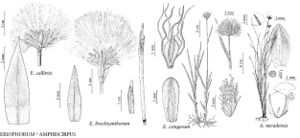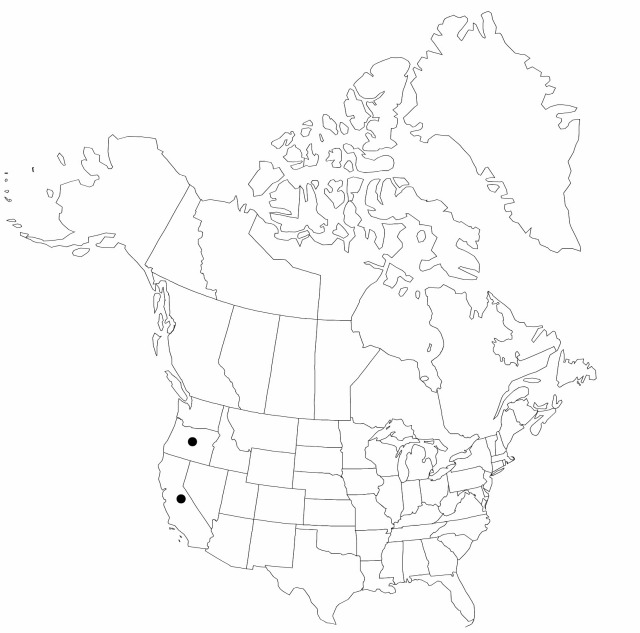Eriophorum crinigerum
Leafl. W. Bot. 3: 165. 1942.
Plants cespitose. Culms trigonous, (10–) 20–100 cm × 0.6–2 mm distally, scabrous distally. Leaves: blades flat, to 45 cm × 1–6 mm; distal leaf longer than sheath. Inflorescences: involucral-bracts 2–5, sheathless, scalelike, 0.4–0.8 (–2.2) cm, apex sometimes mucronate. Spikelets 5–30 or more, usually in dense head, occasionally 1 or 2 conspicuous branches, subsessile, oblong-lanceoloid, 3–10 mm in flower and fruit; scales brown, with pale-brown or green, often red-spotted, 1–3-ribbed center, ovateoblong, 2.5–4 mm, apex acute. Flowers: perianth bristles usually 6, pale-brown, 3–9 mm, usually antrorsely barbed; anthers 1.2–2 mm. Achenes dark-brown or gray brown, oblong-obovoid, 1.5–3 mm.
Phenology: Fruiting summer.
Habitat: Meadows and seepage slopes, usually on serpentine rock
Elevation: 1900–3800 m
Discussion
The relationships of Eriophorum crinigerum are obscure; it has been placed previously in both Eriophorum and Scirpus in the broad sense. Arguments for including it in Eriophorum (A. A. Beetle 1943) are followed here because E. crinigerum differs from all the segregate genera of Scirpus. Eriophorum crinigerum is equally anomalous in Eriophorum because the six perianth bristles are much shorter than those found in other species of Eriophorum, the perianth bristles are antrorsely barbed, and the branches of the inflorescence may bear more than one spike. All the bracts are scalelike; in most multi-spiked species of Eriophorum at least one of the bracts is leaflike. It is perhaps most similar to the northeast Asian species E. japonicum Maximowicz (Scirpus maximowiczii C. B. Clarke), which has a floral structure similar to that of E. crinigerum and has also been placed in both Eriophorum and Scirpus.
Selected References
None.
Lower Taxa
"shortened" is not a number.

